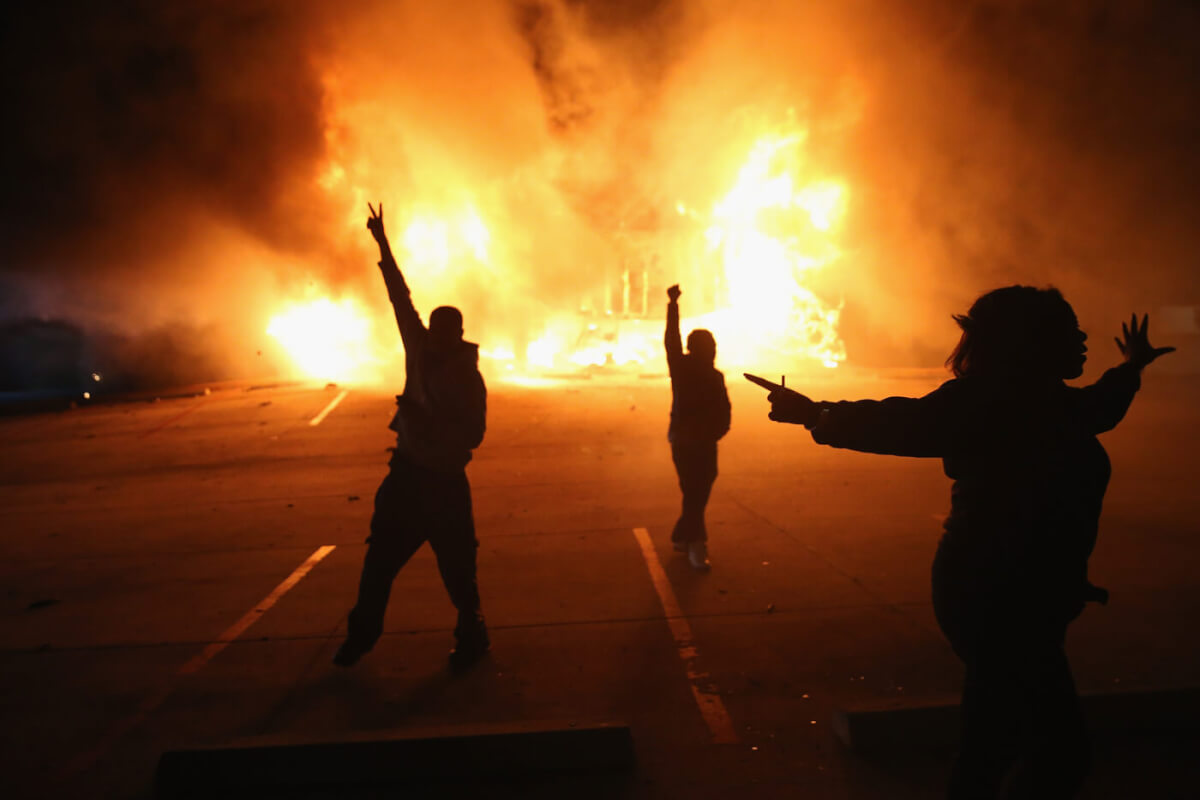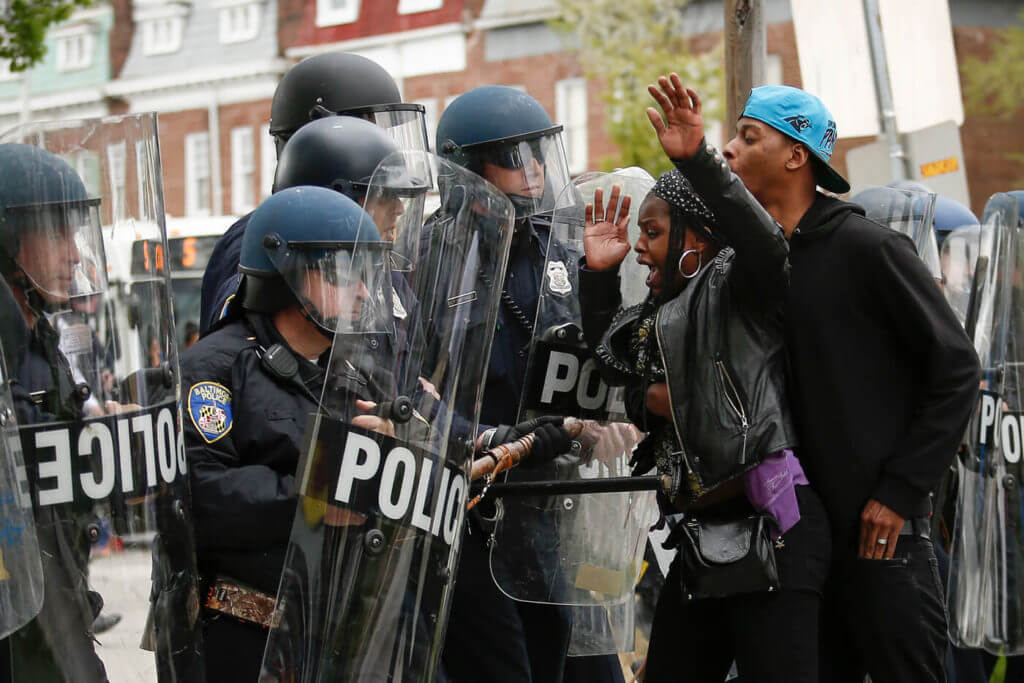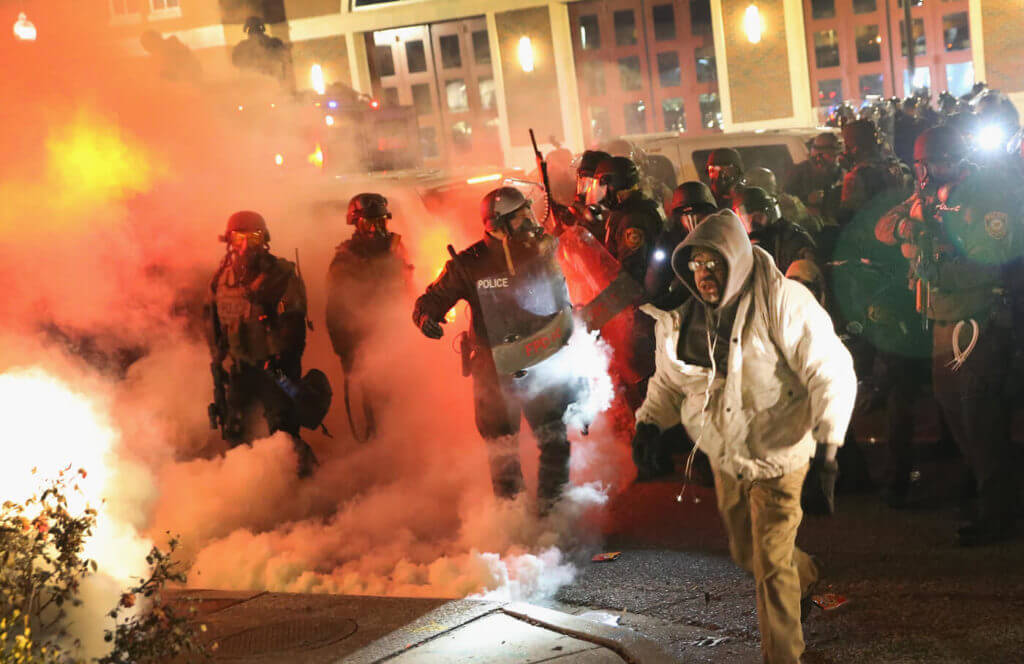Whenever groups of people gather and emotions are running high, violence is always a possibility.
Workers on strike, a political protest, a demonstration against a court verdict, a celebration after a sports victory—these are all events that have sometimes turned violent in the past.
We are fortunate to have the right to assemble and protest in this country. But there is no right to block roads, disrupt traffic, become disorderly or commit other criminal acts. Those things are sometimes tolerated by the authorities, but they can make you subject to arrest.
When a crowd becomes angry and behavior turns criminal, getting swept up in the mob violence can be a serious situation.
HOW DID THIS HAPPEN?

Many times, what begins as a peaceful protest quickly devolves into outright criminal behavior and anarchy—a fullscale riot. One or two out-of-control thugs might begin the mayhem and it becomes contagious. Things not nailed down—rocks, bottles, garbage cans, bags of human waste—become projectiles hurled toward the police lines. Storefronts are smashed, and the merchandise is looted. Vehicles and buildings are torched.
While much of the anger and violence is directed toward the police, other fights often break out among those in the crowd. You might be struck down and trampled as the mob works itself into a frenzy. If someone in the crowd draws a firearm, in the ensuing panic and confusion you won’t know where to run to get out of the path of the flying bullets.
WHY ARE YOU THERE?
The obvious advice, you would think, is just to avoid those ugly congregations of people. But there are a number of reasons why you might be there.
Maybe you’re taking part in what began as a peaceful protest and you’re advocating for a cause for which you have strong feelings. Maybe you work in the area or happen to be shopping or conducting business there. Maybe you’re simply passing through the area and, thanks to bad timing, your avenues of escape are suddenly cut off. Or maybe you’re paid to be there.
Other than police personnel, firemen, ambulance crews and news reporters might find they’re caught in the middle when the violence suddenly turns in their direction.
WATCH FOR TELLTALE SIGNS
There are sometimes few warnings when a protest is about to become a riot, but there are some indicators. Be cautious when two opposing sides of a protest get within pushing distance of each other. Watch for the shouting to escalate and the body language to become more aggressive.
When protesters start pushing against police barriers, things are getting out of hand. Be observant for people in the crowd picking up items to throw. When people’s emotions begin to boil over, they will look to release their nervous energy by damaging surrounding property.
Any of these signs is a signal for you to leave the area immediately if you don’t want to get swept up in the violence.
LEAVE AT ONCE
Avoid the temptation to be a spectator or to be part of something you can brag about on social media the next day. Leave the area at once while you still can.
If you have a car parked anywhere in the area of a protest, you want to drive it away well before a protest gets ugly. Once a mob is hostile, don’t expect anyone to open a path for you. Your car will be swarmed and destroyed with you in it. In that situation, you’re better off leaving the car behind and getting out on foot.
Don’t walk toward police lines for your escape—they probably won’t let you through, and you don’t want to be caught between the police and the rioters. Besides, that’s the direction in which most things are being thrown.
Work your way quickly to where the crowds are thinner and keep moving until you are completely clear of the area. Don’t worry if that’s not your intended direction of travel. The important thing is to get to a safe area. You can worry about getting back on your route home later.
Stores and other doors along the riot’s path will probably be locked and barred early on. If you have nowhere else to go and you do find an unlocked door, you might want to enter. Don’t count on staying safe there for long, however. Remember, stores are often looted and torched during a riot and you don’t want to be trapped inside. Quickly make your way back to an emergency exit in the rear, even if that’s through a stock room where you’re normally not permitted to go. Once out on a side street, keep moving to safety.
THE POLICE RESPONSE
With any incident involving a disorderly public gathering, the police initially will show great restraint. They’ll form lines in an effort to contain the rioting. The departments that have mounted units may also deploy officers on horseback.
The police will be wearing protective riot gear—shields, helmets and batons. They will stand there while rioters shout profanities and spit at them. They’ll stand there as rioters throw rocks and bottles at them. They’ll watch as their patrol cars are overrun and destroyed by rioters.
If the order is eventually given to make arrests or disperse the crowd, you don’t want to be there. Rioters will be taken to the pavement and handcuffed quickly by an arrest team and then will be moved behind the police line where they will be placed in a van for transport. In some cases, tear gas or less lethal rounds might be deployed.
PROTECT YOURSELF
If caught in the middle of a riot, you will have to protect yourself as best you can as you find a way to retreat. Find anything you can use as a shield to keep flying objects from hitting your head. A garbage can lid is about perfect.
You don’t want to stop to engage anyone in a fight. Now’s not the time. If someone pushes you or throws a punch to initiate a fight, defend yourself as best you can, but keep moving through the crowd to get away.
You want to stay on your feet. On the ground you risk being trampled or beaten. If you are thrown to the ground, kick your attackers away, protect your face and then fight hard to get to your feet.
If your residence or business is in the path of a riot, you have to be sure of your state and local laws in considering how to defend your property. Remember that you, too, have to show restraint and good judgment in the face of chaos, and that’s not easy when the adrenaline is pumping through your veins.
COOL-HEADED, QUICK REACTION
Removing yourself from the violence of a riot can be difficult if you’re caught in the middle of it. You can make it to safety, but it requires you to keep a cool head, make smart decisions and take decisive action.

1. Watch for warning signs that a protest might become a riot.
2. Move from the area quickly at the first sign of trouble.
3. Don’t try to drive your vehicle through a crowd.
4. Don’t move toward police lines. You don’t want to be caught in the middle of the violence and that’s the direction where things will be thrown.
5. Don’t take refuge for long in a nearby store. It could become a target of the violence. Go out via a rear exit.
6. Protect your face and head from objects being thrown. A garbage can lid or other object on the street might work as a shield.
7. Defend yourself as needed, but don’t stop to engage anyone in a fight. Keep moving to safety.
8. Try to stay on your feet to keep from being trampled or beaten.
9. Know the law and how far you can go in protecting your own property.
Editor’s note: A version of this article first appeared in the Doomsday 2016 issue of American Survival Guide.




